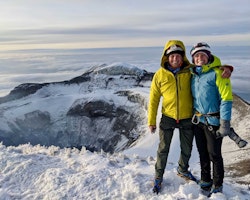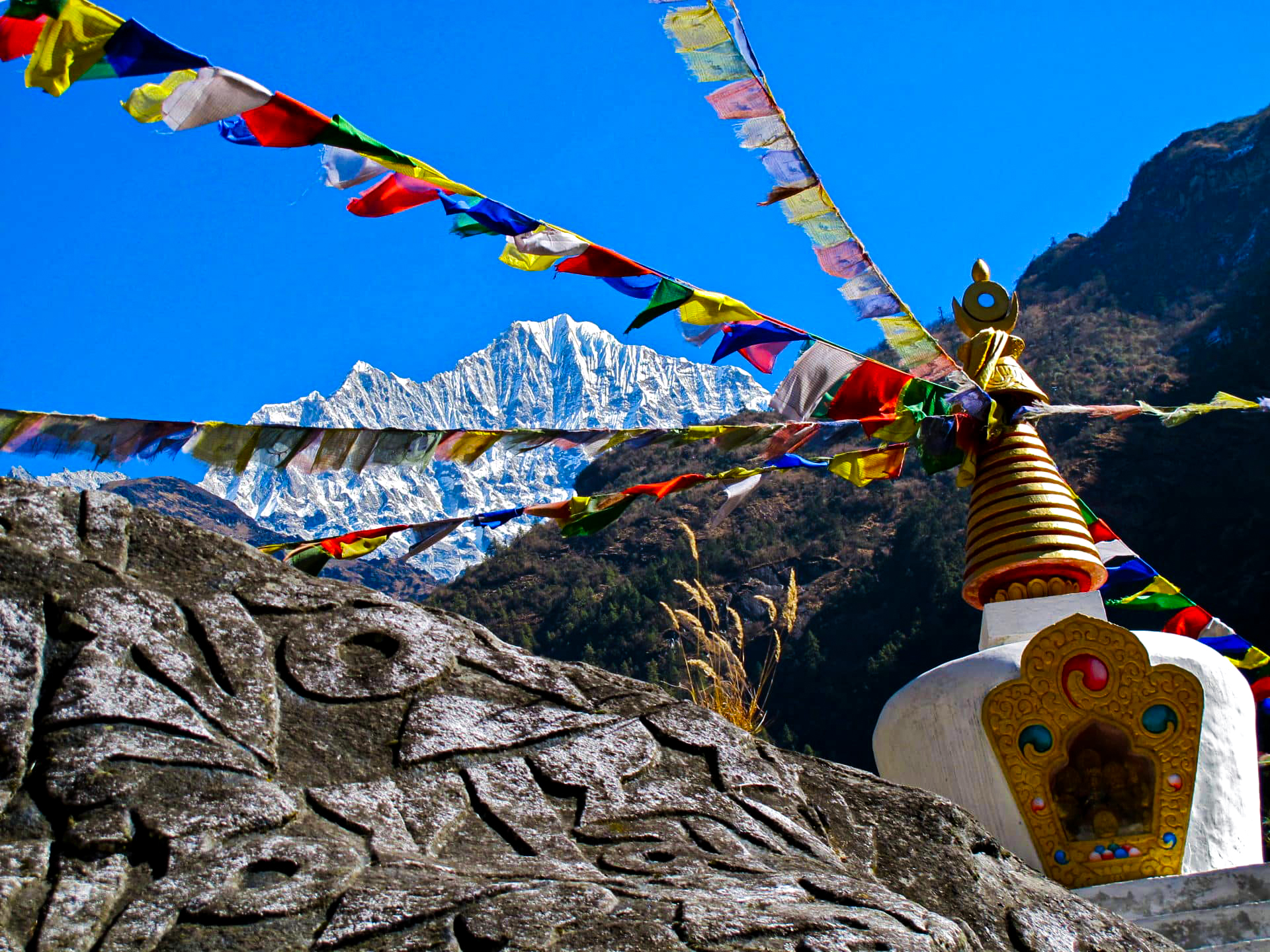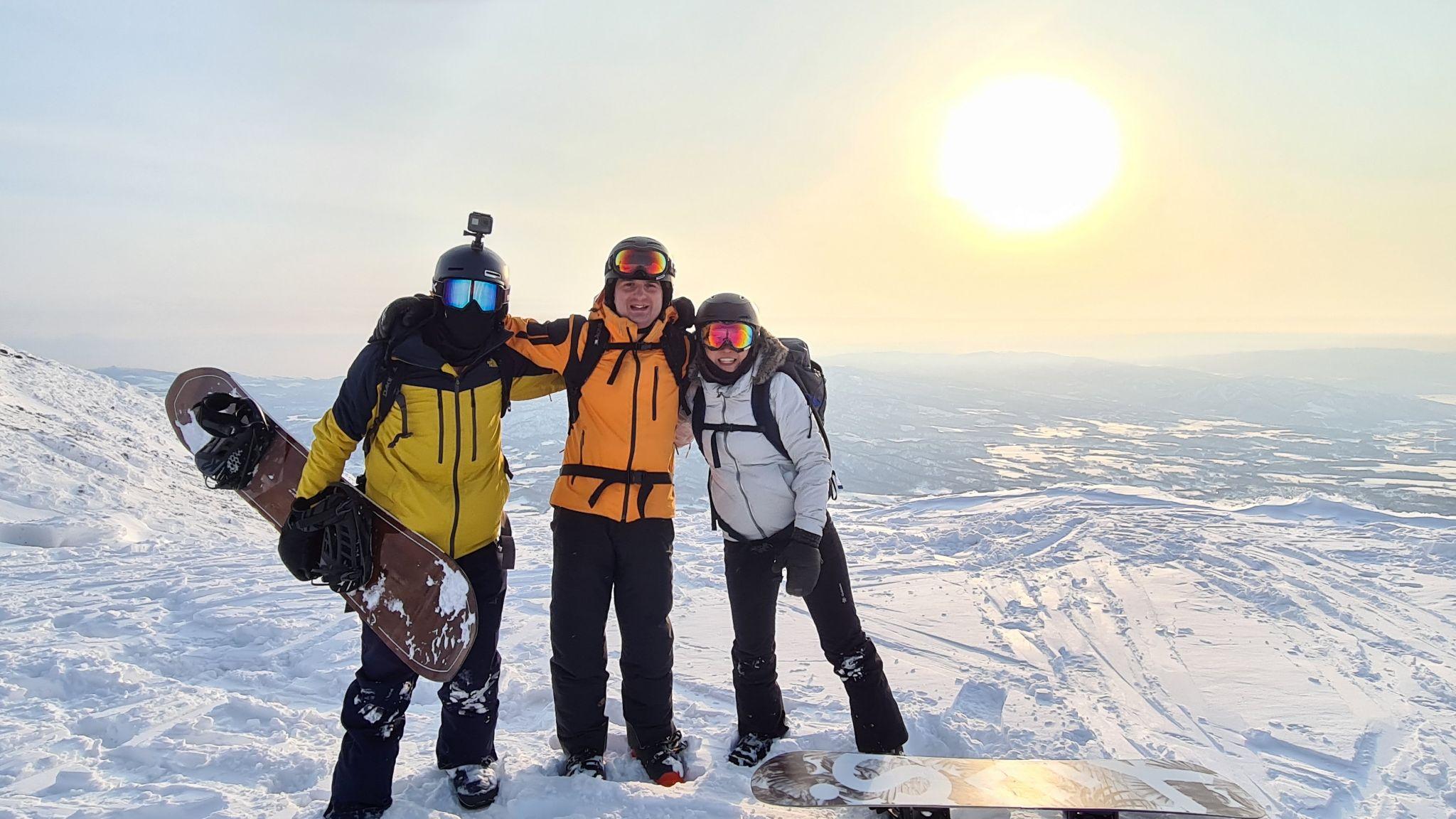How to Start your Cotopaxi Climb
Thinking of going on this adventure yourself? Here’s everything you need to know for an exciting and safe mountaineering trip to Cotopaxi – the second highest (5897 m) mountain in Ecuador, and one of the highest active volcanoes in the world.
For your Cotopaxi climb, you will need to travel to Ecuador. Normally, programs will take you to the Cotopaxi starting point from Quito (2,800 m / 9186 ft), the country’s capital. The Cotopaxi volcano is located just 50 km (31 mi) south of Quito, in the Cotopaxi National Park, and the closest town to the volcano is actually El Pedregal (an hour hike away from the parking lot at the route starting point).
Some programs may also start from Baños, Riobamba, Ambato or Machachi.

Cotopaxi is the second-highest peak in Ecuador. Photo credit: Fernando.
Cotopaxi Climbing Routes
All the Cotopaxi climbing routes are all grade II (PD), but only one (the Normal Route) is used at the moment. They all start out from the José Rivas hut:
Normal Route (North)
The normal route is the way up to the Cotopaxi summit and will lead you through a snowy trail, through a glacier, and several crevasses. At an altitude of around 5400 m, you will pass the Yanasacha rock face, before a last snowy stretch to the crater summit, which you can walk around once you reach the top.

Cotopaxi rises to a towering height of 19,393 feet (5,911 meters). Photo credit: Jaime.
Rompecorazones Route
Rompecorazones translates to “heartbreaker”, and this northwest route gets this moniker because there is a stretch at the start that involves a steep 2-3 hour ascent with few resting options. It starts on the right side of the Jose Rivas hut, and crossing a deep crevasse at 5,500 m is also part of the adventure. Nowadays, it is usually used as an alternative descent route.
Yanasacha Route
Once the normal route to the top of Cotopaxi, this very scenic option is unfortunately closed. Deep crevasses and seracs have caused many accidents, and so it is no longer the main way to the Cotopaxi summit. The Yanasacha Route gets its name from the black rock wall on the way, which is sometimes visible all the way from Quito.

Cotopaxi displays the grandeur of the Andes. Photograph courtesy of Fernando.
How Long is the Ascent in Cotopaxi?
The duration of this program is generally 2 days, but keep in mind that a Cotopaxi climb requires good acclimatization.
The ascent itself takes 2 days. Climbers usually wake up at midnight to arrive at the Cotopaxi crater at 6 am on the second day.
Longer programs usually include other activities around the Cotopaxi National Park, including other ascents to nearby volcanoes or peaks.
Want to give it a shot? Try a 2-day Cotopaxi volcano ascent with certified local guide Fernando, or spend some more time in Ecuador on this 9-day Climbing program to Cotopaxi and Chimbronazo with ASEGUIM-certified guide Rafael.

Summit picture in Cotopaxi. Photo credit: Jaime.
Lodging Options during your Climb
On your Cotopaxi climb, you will spend a night at the famous Jose Rivas mountain hut (4,862 m). Built back in 1971, it has a capacity for 86 people and was remodeled in 2009. It is very well-equipped including a bar, running water, electricity large living rooms, 2 large kitchens, and lockers.
Most groups attempt the Cotopaxi summit directly from the Jose F. Rivas hut, which is about 6 hours away.

Lodge in Cotopaxi. Photo credit: Jaime.
Longer programs include spending the night in other mountain huts in the area.
Physical Requirements and Technical Difficulty
The Cotopaxi ascent is not considered difficult, but it does require the use of technical equipment and involves some glacier climbing. The normal route is graded PD (Peu Difficile) according to the IFAS Alpine Grading system.
Keep in mind that this ascent requires acclimatization. Some programs include this by attempting other peaks and volcanoes on the way to Cotopaxi; such as Pasocha (4,164 m), Rucu Pichincha (4,698 m), and North Illiniza.

Glacier traverse during Cotopaxi ascent. Photo credit: Jaime.
When is the Best Time to climb Cotopaxi?
The weather in the area of Cotopaxi is generally good, and clear. At the beginning of winter in the Southern Hemisphere (mostly June and July) the weather tends to be dry but windy. In the summer, December and January, the weather tends to be less windy.

The volcano was first ascended on November 28, 1872, by Wilhelm Reiss and Ángel Escobar. Photo credit: Jaime.
Due to the climate conditions, climbing Cotopaxi is generally possible year-round, but December and January are considered the best months.
Essential Gear for this Expedition
For your Cotopaxi climb, apart from your usual mountaineering equipment, you will need crampons, crevasse rescue gear, and an ice ax.

Cotopaxi holds cultural significance for the local indigenous communities, who consider the volcano to be a sacred place. Photo credit: Jaime.
Estimated price
2-day Cotopaxi climbing programs range between 280 and 590 USD. Longer programs, like those that include climbing Chimborazo or Illiniza, take between 9 and 11 days and can cost between 1500 and 3100 USD.
Book your place on this 5-day Cotopaxi and Chimborazo program led by IFMGA-certified local guide, Jaime.
Insurance recommended for climbing Cotopaxi
When climbing Cotopaxi, you might face challenges such as extreme weather, altitude sickness, and the possibility of accidents. Along with physical preparation, it's crucial to have comprehensive rescue and evacuation insurance. Explore-Share collaborates with Global Rescue to provide climbers with specialized coverage, including emergency rescues, evacuations, and medical assistance. Prior to your ascent, ensure you have the necessary protection in place. For more details on their insurance options, visit here.
What else to do near Cotopaxi
Planning some activities before your Cotopaxi climb is a great idea to deal with altitude, and ensure you have good acclimatization.
Hiking: there are several programs available, from 1-day to 19-day trips.
Mountain biking: you can also jump on a bike for a tour of the Ecuadorian highlands around Quito, Cotopaxi, and Chimborazo.
Backcountry skiing: attempt Ecuador’s triple crown of Nevado Cayambe, Cotopaxi and Chimborazo, on skis.
Visiting some of the local mountain towns, such as Otavalo (famous for its indigenous market), the colorful Cotacachi (the first South American ecological county), and Ingapirca (a town with Inca Ruins), are some of the many things you can do while in Ecuador as well.

Climbers who reach the summit can experience stunning views of the surrounding Andean landscape. Photo credit: Jaime.
So, are you ready to climb your way up to the summit of one of the most impressive active volcanoes in the world? Then head to Cotopaxi this year for an unforgettable climbing experience!








